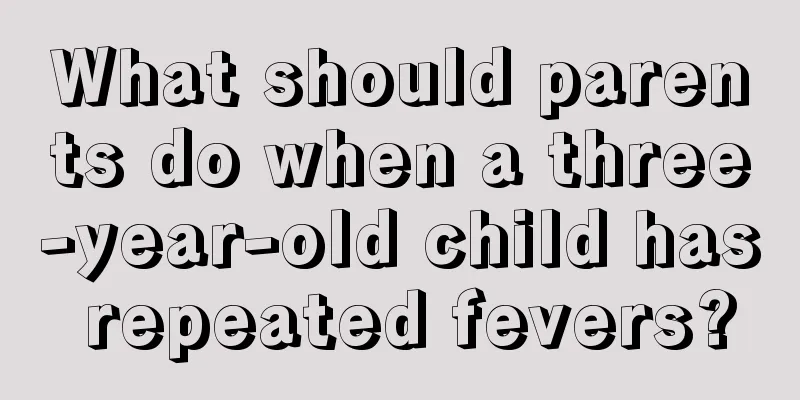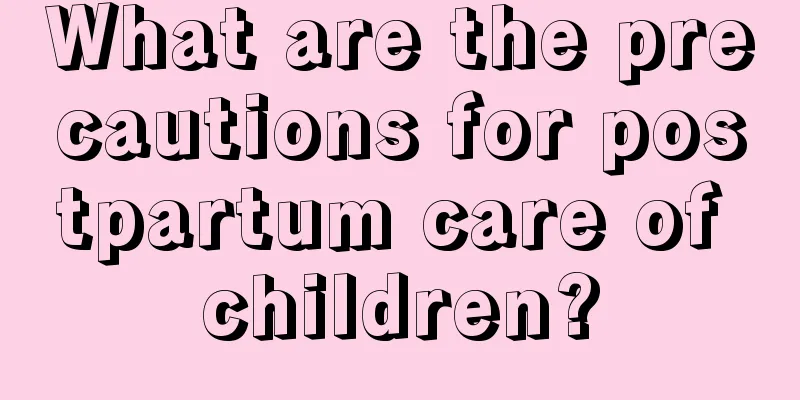What is the cause of blisters on the child's body?

|
When a child develops blisters all over his body, the most common symptom is a rash. In addition, if there is allergic dermatitis or a viral infection, this symptom may also appear. Of course, we must be alert to chickenpox in babies. Chickenpox is a common skin disease. Infants and young children are a more common group of patients. When a child has chickenpox, parents must understand some precautions. Let's take a look at this aspect. What is the cause of blisters on the child's body? According to the rash on the child's body accompanied by transparent manifestations, it is considered to be contact allergy or viral infection. It is recommended to go to the dermatology department for examination. After the diagnosis is confirmed, targeted treatment can be carried out with anti-allergic drugs and drugs that enhance the body's immunity. Chickenpox is a common skin disease in our daily life, and it often occurs in infants and young children. It’s autumn again, and we should be especially careful when the seasons change. So what should we do if our children are infected with chickenpox? What should we pay attention to when our children have chickenpox? What can we eat when we have chickenpox? Today I will show you how to find out. Precautions for children with chickenpox 1. Chickenpox is viral and can be transmitted to other people. If a friend at home has chickenpox, temporarily separate him from other children and prevent him from going to crowded places such as kindergarten to avoid infecting people who do not have immunity against chickenpox. 2. It takes about a week for chickenpox to develop from the initial symptoms to full development. During this period, parents should pay attention to keeping the children's body clean where the chickenpox occurs to avoid inflammation and trauma. 3. When you have chickenpox, it is inevitable to feel itchy. In addition, children have poor self-control and are very likely to scratch inadvertently. Parents should cut their children's fingernails short to avoid scratching and leaving scars and acne marks. 4. Some children are particularly restless when sleeping. Parents can make the children wear thin gloves when they sleep, or tie the children loosely in the quilt with a rope. This can prevent the children from scratching at night and avoid rubbing against the chickenpox due to turning over and over during sleep. 5. During the chickenpox period, the body temperature is generally above 38 degrees. The abnormal body temperature causes various enzymes in the body to not work normally. It is common for children to have no appetite at this time, so maintain a light diet to allow the body to absorb better. 6. Take oral and topical medicines together with the medicines for treating chickenpox. The editor reminds you that chickenpox is a normal pathology. If it is not a serious problem, do not use hormone drugs lightly - hormones are effective quickly, but they are not good for the body. Dietary taboos for children suffering from chickenpox 1. Avoid things that may cause hair loss Although both chickenpox and measles are exanthematous febrile diseases, measles is more difficult to cure through thorough treatment and requires the use of exanthematous foods. For chickenpox, it is advisable to clear away heat, and avoid eating irritating foods. Eating irritating foods will increase the number and size of chickenpox, thus prolonging the course of the disease. Therefore, in the early stages of the disease, it is forbidden to eat irritating foods, such as coriander, rice wine, crucian carp, ginger, green onion, mutton, rooster, shrimp, eel, pumpkin, etc. 2. Avoid spicy food Like other febrile diseases, chickenpox should avoid spicy foods, as spicy foods can help produce phlegm and make the fever more serious. Spicy foods include chili peppers, chili oil, mustard, curry, garlic, leeks, fennel, cinnamon, pepper, etc. 3. Avoid greasy food Children with chickenpox often experience loss of appetite and poor digestion due to fever, so they should avoid eating greasy foods, such as fried sesame balls, chocolate cakes, twisted dough sticks, fried pork chops, fried steak, fried chicken and other greasy stomach-harming foods. These foods are difficult to digest and will increase the burden on the gastrointestinal tract. 4. Avoid hot foods The treatment of chickenpox should focus on clearing heat and detoxifying, so foods that are hot in nature should not be taken. Such foods include dog meat, mutton, venison, sparrow meat, broad beans, garlic sprouts, leeks, longan meat, lychees, dates, corn, etc. |
<<: Hand, foot and mouth disease rash treatment
>>: The baby suddenly has red spots all over his body
Recommend
What are the dangers of rabies vaccination for children?
Rabies vaccine is an antibody that is usually inj...
Baby nails are purple
I recently saw a special interview on TV. There w...
What calcium tablets can children take to grow taller
When it comes to calcium supplementation for babi...
What should children eat to grow taller?
I believe that we all had such an experience when...
Do children sweat when they have a fever?
Children often have similarities with adults when...
What should I do if my child's eyes are congested? Eat more of these foods
Bloodshot eyes are mostly caused by fatigue, but ...
Why can't children grow meat even if they eat?
In daily life, children's physical developmen...
What are the symptoms of baby's stomach change?
Babies are young and often prone to illness, and ...
What causes itchy belly after giving birth?
Many female friends need to regulate their bodies...
What are the prevention methods for myopia in teenagers?
With the changes in the social environment, acade...
How to treat Henoch-Schonlein purpura nephritis in children
It is not suitable for children's growth. If ...
Children's fever and convulsions medication
Children are often prone to fever and convulsions...
How many months does a child start talking?
With the development of society, more and more pa...
At what age should babies start wearing underwear?
We all know that many babies wear diapers when th...
Does your child have blood on his butt after defecation?
Generally speaking, when children have blood in t...









